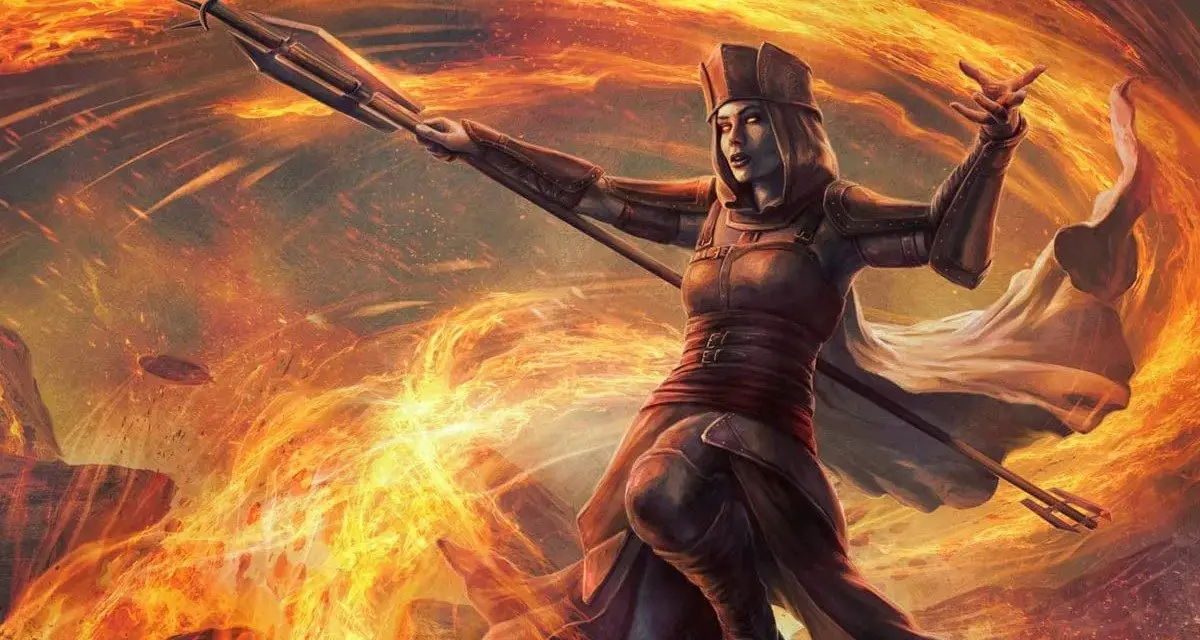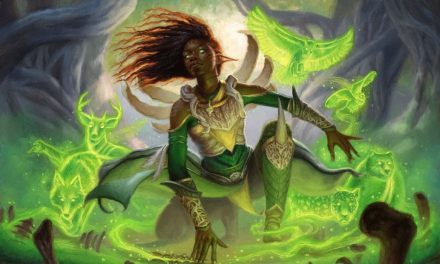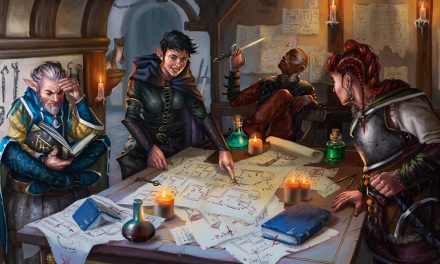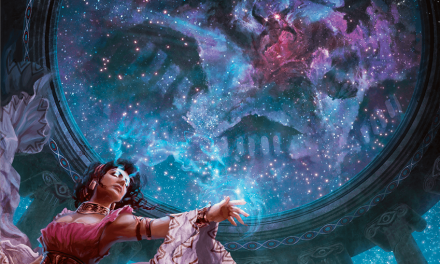It doesn’t get more iconic than the image of a robed Wizard lobbing a fireball at a group of charging enemies!
While any Wizard is certainly capable of doing this, those who dedicate themselves to the school of Evocation raise the bar for arcane destruction!
Whether laying siege to enemy fortifications or reducing the enemy ranks to a fine ash, these Wizards are a valuable part of any party’s offensive strategy.
If you wish to master the fine art of blasting your foes to kingdom come, this article is for you.
This is the full guide to the Evocation Wizard in D&D 5e!
What is the Evocation Wizard in D&D 5e?
Wizards who specialize in the School of Evocation have dedicated themselves to the study of magic that produces elemental effects.
Fiery explosions, biting cold, and corrosive acid are just a few of the many options available to you.
While not all Evocation magic is offensive in nature (there are many utility spells that also fall into this school of magic), a great many damage spells are from this school.
This certainly includes the most iconic damage spells!
To this end, Evocation Wizards focus on mastering their casting to get the most value possible out of their spells.
As they level up, they’ll be able to increase the damage that their spells deal while also preventing their allies from getting caught in the blast of their AoE spells.
The Evocation Wizard is one of eight Wizard subclasses that appear in the 5e Player’s Handbook.
Role in the Party
Evocation Wizards are perhaps the best example of a “glass cannon” in D&D 5e. That is to say that they can unleash some absolutely crazy damage but tend to be fairly squishy themselves.
Because of this, Evocation Wizards are most often going to be pretty firmly situated in the party’s backlines. While the tougher party members keep the enemies’ attention, the Evocation Wizard can function as a type of arcane artillery.
Though it might sometimes be necessary for the Evocation Wizard to take a different position to line up an AoE spell just right.
When that happens, just make sure that you’ve got an escape plan to get to safety just in case. Even if that escape plan is just “more fireballs!”
Whatever the case, Evocation Wizards generally focus on their ability to deal damage first and foremost.
Though this doesn’t mean that they aren’t capable of also providing some arcane utility to the party!
In fact, it’s a very good idea to keep a wide range of utility spells handy while prioritizing dealing damage with a few of your favorite offensive spells.
Because (and I hate to be the one to break this to you) unfortunately there are some problems that can’t be solved by blasting your way through them.
Sad news, I know.
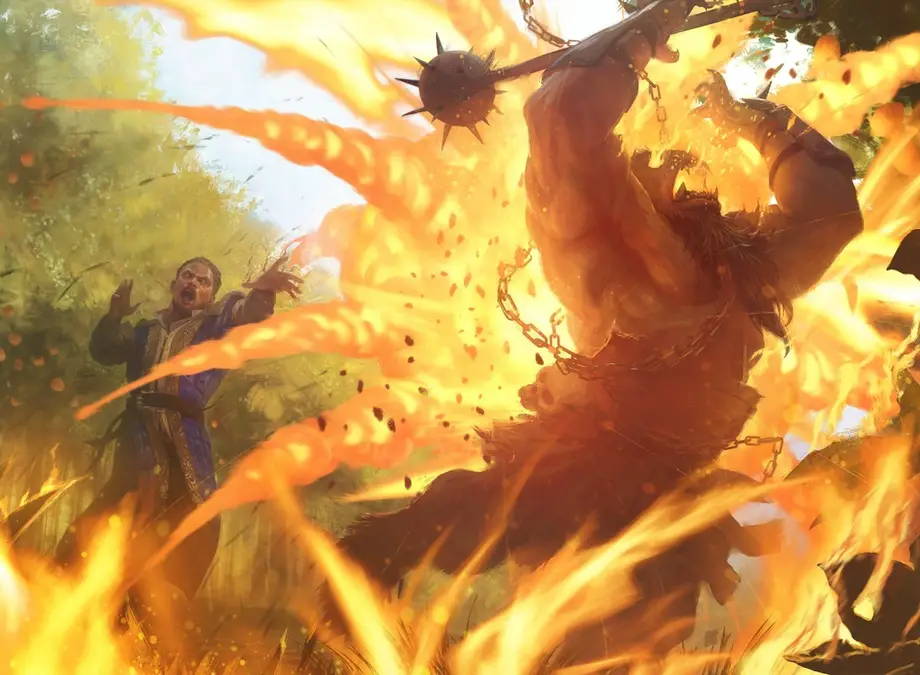
Evocation Wizard Features 5e
Evocation Wizards have dedicated their lives to the study of arcane magic but specialize in the school of Evocation.
Because they have such a deep understanding of this magic and its power, they’re capable of more powerful Evocation magic than other Wizards.
This is reflected in the Evocation Wizard’s class features.
Let’s dive in!
You Might Like: The Schools of Magic in D&D 5e Explained
Evocation Savant (Level 2)
As a specialist in Evocation magic, you’re more efficient when it comes to adding Evocation spells to your spellbook.
The gold and time you must spend to copy a Evocation spell into your spellbook is halved.
As a Wizard, your spellbook is your single most important possession. You will constantly be looking to learn new spells and add them to your precious spellbook.
Of course, this does take time, money, and a bit of luck when you’re looking for specific spells to copy into your book.
Thankfully, the time and gold cost for copying Evocation spells is cut in half for you!
Note that you’re not only limited to learning Evocation spells. In fact, it’s still a very good idea to pick up some utility and movement spells like Identify or Misty Step for when you can’t blast your problems away.
I strongly recommend checking out my article that covers using and managing the Wizard’s spellbook in more detail to help you with this. It’s quite literally the most important thing for any Wizard to know.
Sculpt Spells (Level 2)
Right out of the gate, the Evocation Wizard finds themselves with a little bit of a conflict of interest.
On one hand, they really like big AoE explosions and other spells that hit multiple creatures.
On the other hand, their allies have… uh… mixed feelings… about being one of the creatures caught in that area of effect…
Thankfully, the Evocation Wizard’s Sculpt Spells feature gives us a way to make sure that everyone is happy!
Well, except for the enemies anyway. They’re going to be even more terrified now that you aren’t as prone to blowing up your own allies…
When you cast an evocation spell that affects other creatures that you can see, you can choose a number of them equal to 1 + the spell’s level.
The chosen creatures automatically succeed on their saving throws against the spell, and they take no damage if they would normally take half damage on a successful save.
It’s always unfortunate when you know that you could take out a dozen enemies at once with a fireball, but you’d probably nuke your entire party in the process.
With Sculpt Spells, moments like that are almost entirely a thing of the past. You’ll still need to be mindful of where you’re casting, but it’s less likely that you’ll be hitting friendly targets now.
The number of targets that you can sculpt your spell around depends on the spell’s level.
So, for example, a level 3 Fireball could be sculpted around 4 creatures because it’s a level 3 spell and you add +1 from this feature.
Meanwhile, upcasting that Fireball as a level 6 spell would let you sculpt it around a total of 7 creatures.
Nifty, right?
Just be aware that you have to be able to see the target that you’re sculpting your spell around.
So, if your ally is around the corner but still in the AoE of your fireball, you won’t be able to sculpt it around them!
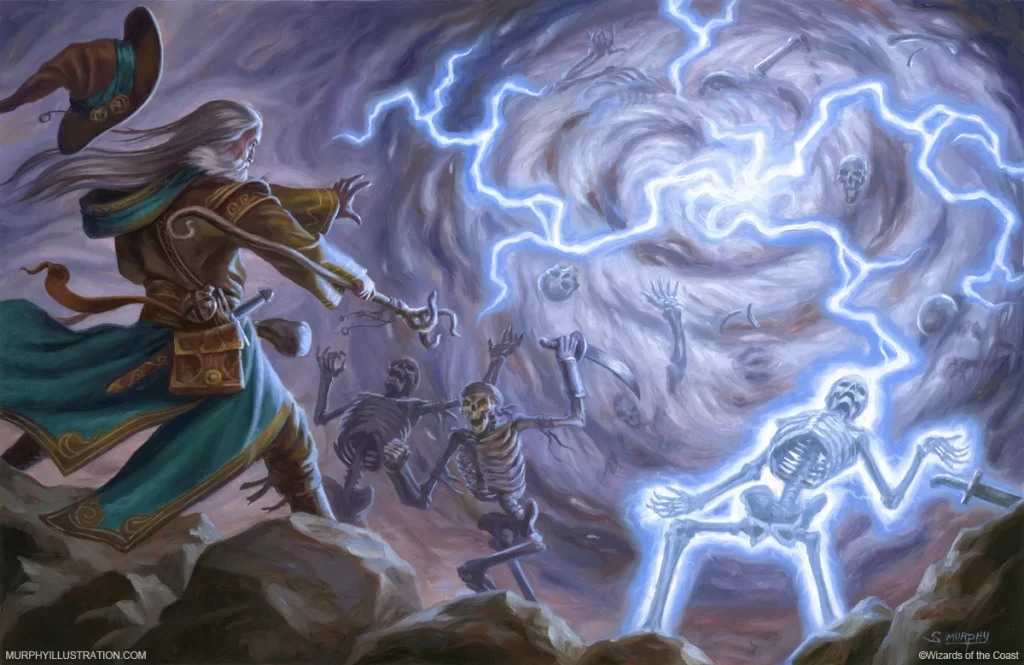
Potent Cantrip (Level 6)
As much as the Evocation Wizard loves their big AoE spells, their cantrips need some love too!
Your level 6 feature gives you a handy buff to the unsung heroes of your spell list.
When a creature succeeds on a saving throw against your cantrip, the creature takes half the cantrip’s damage (if any) but suffers no additional effect from the cantrip.
This isn’t a bad feature by any stretch of the imagination. However, it can still be a little confusing and its usefulness really depends on the cantrips that you’ve learned.
The biggest downside is that there aren’t many Wizard cantrips that deal damage and require a saving throw. Even for those that do, you want to pick options that will be consistently useful for you.
In terms of raw potential damage, Poison Spray is a solid option.
Frostbite is a great option since it deals damage and inflicts disadvantage on the target’s next weapon attack roll if they fail their saving throw. If they succeed, at least you’ll still be dealing some damage.
You might also consider Acid Splash which can potentially hit two enemies. Even if they succeed on their saves, at least they’ll both be taking damage!
Though Mind Sliver is my personal favorite. They’ll take damage regardless thanks to Potent Cantrip, but enemies tend to be weaker at Intelligence saving throws. Even better, failing against this makes it more likely they’ll fail at their next save!
Funny enough, this encourages you to move away from standard cantrips like Fire Bolt and use those that require saving throws from enemies instead.
Consider that a Fire Bolt that misses will deal no damage whereas an enemy that saves against your cantrip will still take half damage!
Interestingly, note that this isn’t limited to just Wizard cantrips.
If you’ve picked up another cantrip like Sacred Flame or Toll the Dead through feats, multiclassing, or whatever else, they’ll also benefit from the Potent Cantrip feature!
Empowered Evocation (Level 10)
At level 10 your Evocation spells just got a lot stronger!
You can add your Intelligence modifier (minimum of +1) to the damage roll of any wizard evocation spell that you cast. The damage bonus applies to one damage roll of a spell, not multiple rolls.
By level 10, you should have an Intelligence score of 20 (for a +5 modifier) or at least 18 (for a +4).
This is especially useful for your Area of Effect spells like Burning Hands, Fireball, Cone of Cold, and Lightning Bolt. That extra damage from Empowered Evocation is getting applied to each creature you hit which means that we’re now talking about exponential value!
For example, let’s say you catch 7 enemies in your Cone of Cold. With an extra 5 damage thanks to your Intelligence score of 20, you’ve thrown out an additional 35 points of damage onto the field!
Not too shabby!
This also makes Frostbite an appealing cantrip for you. It will be getting the buff from Potent Cantrip and, as an Evocation cantrip, the buff from Empowered Evocation as well!
Just be mindful that this only applies to a single damage roll from a spell.
So, a spell that fires multiple attacks like Scorching Ray, for example, would only get this benefit on one of the blasts.
While there is some heated discussion on the subject, I would say that this same logic also applies to the Magic Missile spell.
Ultimately, it depends on whether your DM rules each dart from Magic Missile as requiring its own separate damage roll or not.
If the bonus from Empowered Evocation is applied to each of these missiles, it becomes an INCREDIBLY powerful spell that deals a large amount of guaranteed damage!
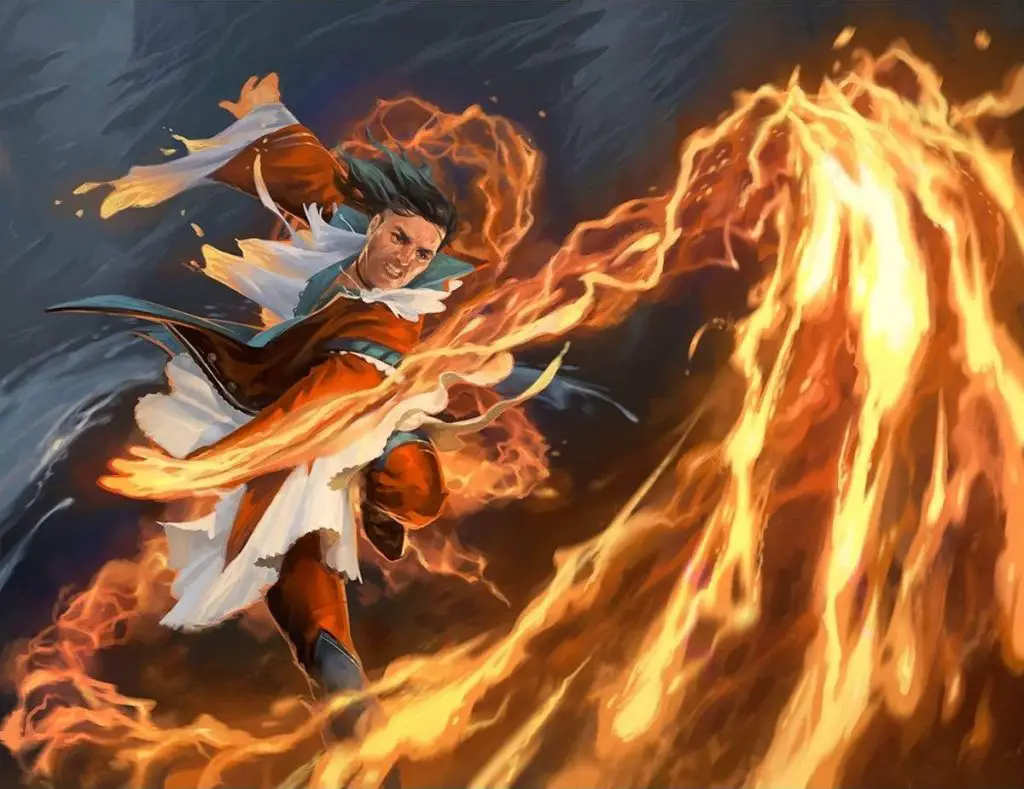
Overchannel (Level 14)
At level 14, we finally come to the Evocation Wizard’s capstone feature: Overchannel.
As you probably guessed from the name, this is A DOOZY!
When you cast a Wizard spell of level 5 or lower that deals damage and isn’t a cantrip, you can deal maximum damage with that spell.
The first time you do so, you suffer no adverse effect.
If you use this feature again before you finish a long rest, you take 2d12 necrotic damage for each level of the spell, immediately after you cast it.
Each time you use this feature again before finishing a long rest, the necrotic damage per spell level increases by 1d12.
This damage ignores resistance and immunity.
Guaranteeing that you’re doing maximum damage gets you A TON of extra use out of your lower-level spells.
Because let’s be honest, at this level your old faithful spells might have started to gather a little bit of dust. Those new high-level spells are just so shiny, after all!
Overchannel keeps those spells that are stronger than cantrips but below level 6 very useful and relevant for you. It’s also exceptional for those moments when you absolutely need to take a “scorched earth” approach to dealing with a group of enemies.
Naturally, you’re going to get the best value out of this when you’re dropping AoE spells.
Fireball, Wall of Fire, Cone of Cold, and such are all made infinitely better by catching as many enemies as possible in their area of effect and then using Overchannel to crank the damage all the way up to the max!
You’re going to get one free use of this feature per day.
After that, it gets a little trickier…
Overchanneling Safely
Yes, it is absolutely possible to Overchannel yourself to death or, at the very least, unconsciousness if you aren’t being careful.
There’s no way to avoid or reduce the necrotic damage you take from using this more than once per long rest.
Taking 2d12 damage PER SPELL LEVEL is a steep cost. As one of the squishiest classes in the game, taking 10d12 damage for Overchanneling a level 5 Cone of Cold is a HUGE ask for any Wizard.
And that’s just for using Overchannel a second time before a long rest!
Because the damage increases by 1d12 per spell level each time you use Overchannel before a long rest, your third use of it would see you taking 15d12 necrotic damage on a level 5 spell.
Ouch!
If you absolutely must do another Overchannel, make sure that your friendly healer is ready to patch you up afterward!
Try to save this for those high-stakes “do or die” moments.
If you absolutely must use it more than once per day, you might also prioritize using it to amp up your lower-level spells so that you are taking less damage.
Either way, if you haven’t already been showering your healer with gifts and fruit baskets, now is probably a good time to start!
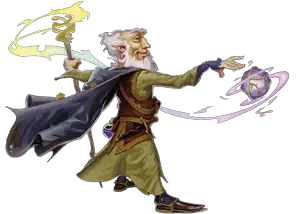
Connections
So how might you connect your Evocation Wizard to the story and world?
With so much destructive potential in one school of magic, Evocation Wizards tend to be very in demand for military forces. Of course, there are also plenty of non-military organizations who are always happy to welcome an Evoker into their ranks as well.
Whatever the organization, there is a general preference for which side of the fireball they would rather be on. Curiously few are eager to be on the receiving end for some reason.
Because of this, Evocation Wizards tend to have more connections in society than strictly staying within academic circles.
That said, this doesn’t mean that they aren’t common in the halls of universities and arcane academies. An argument can certainly be made about the school of Evocation being among the most practical of subjects to study!
Remember: while Evocation certainly features plenty of blasting, it’s not a one-trick pony.
Evocation magic includes plenty of protective, utility, and even healing magic as well! (Though the healing Evocation spells aren’t on the Wizard spell list.)
As with all Wizards, ask yourself what your character is pursuing and hopes to learn from adventuring.
Because the school of Evocation is directly working with powerful elemental forces that often deliver very explosive results, there is absolutely a level of mastery to be expected here.
While that’s true with all spellcasters, those from other schools don’t typically risk blowing themselves and everyone/everything around them up because they mispronounced a verbal component!
To that end, are they seeking more practical applications to push the limits of Evocation magic? Are they seeking rare knowledge to help them master such powerful magic?
Or, hey, maybe they just want to set the world on fire. I’m not going to argue with them until I am very far out of Fireball distance!
Is the Evocation Wizard Good?
Every toolbox needs a hammer and, when it comes to magic, that hammer is usually from the school of Evocation.
One of the best things about the Evocation Wizard is that it is a straightforward subclass that just delivers pure value at every level.
This makes it easy enough to pick up for those who are new to D&D or playing spellcasters. However, it’s also exciting and useful enough that veteran D&D players can also greatly enjoy this subclass.
While there’s a lot to love about the Evocation Wizard’s features, I think the best one is the Sculpt Spells feature.
Not having to worry about nuking your own party opens so many more opportunities to drop big spells and roll a ton of dice!
Of course, the extra buff to your Evocation spells and ability to Overchannel in those key moments just layers on even more fun things to love about this subclass.
If you favor an offensive “blaster” style spellcaster or just want to experience the power of the iconic Wizard subclass, it’s absolutely worth playing an Evocation Wizard!
Conclusion – Evocation Wizard in D&D 5e
I hope you’ve found this guide to the Evocation Wizard in D&D 5e helpful!
With so many different interesting schools of magic in D&D 5e, it’s honestly refreshing to see that the tried-and-true concept of a blaster specialist still stands out.
Sure, everybody is going to noticeably react when a Wizard is casting a big AoE spell. But enemies will especially be screaming and running for cover when they see that it’s an Evocation Wizard casting that spell!
But what are your thoughts on the Evocation Wizard in D&D 5e?
Let’s chat in the comments below!

